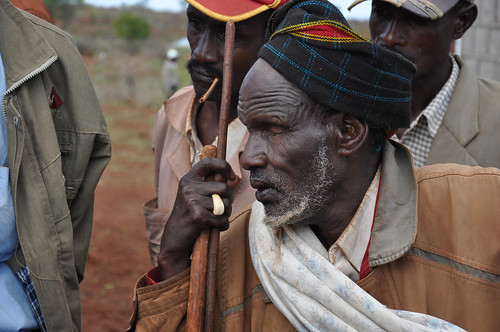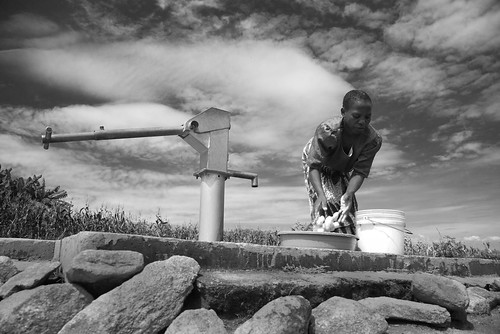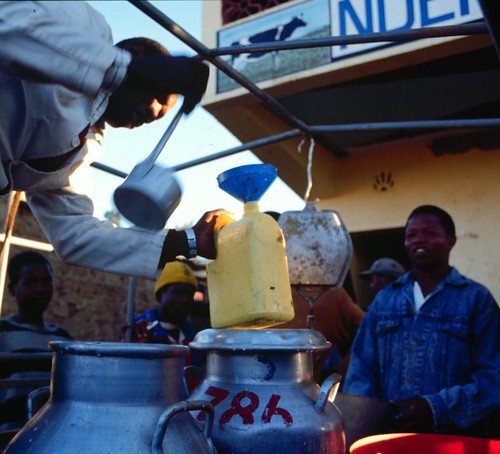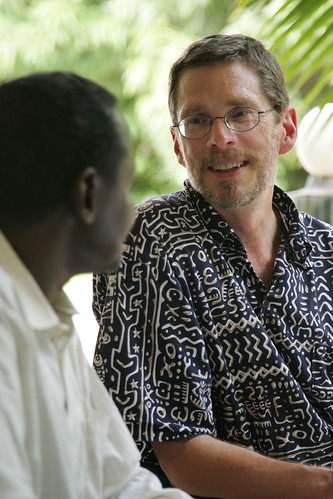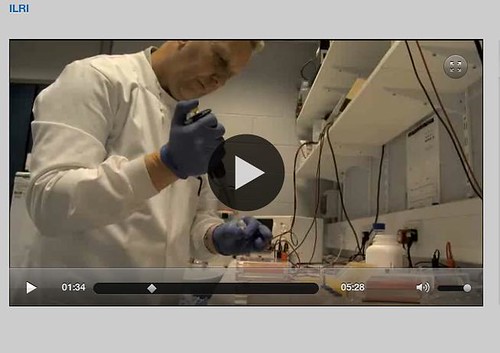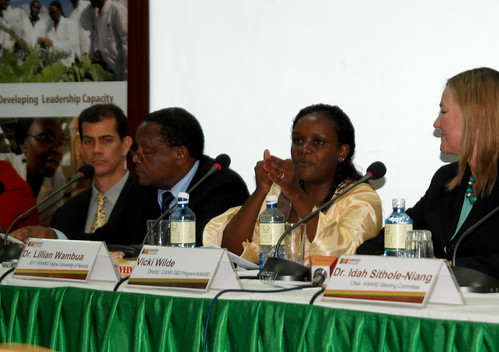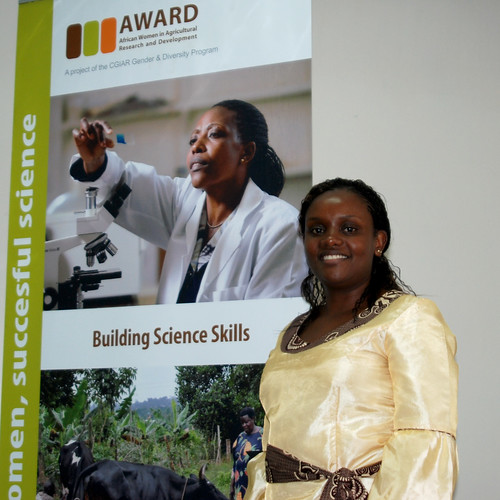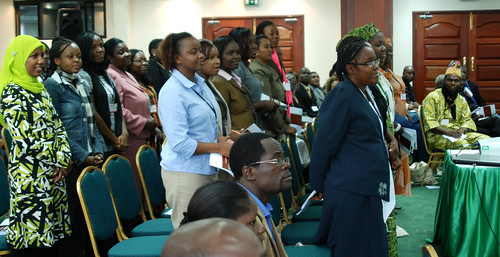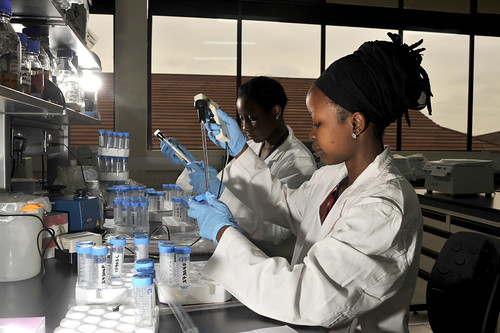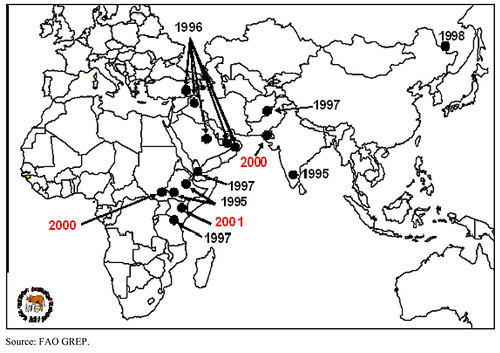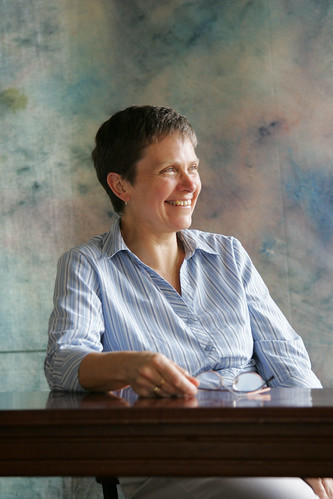
ILRI director for institutional planning Shirley Tarawali (photo credit: ILRI/Stevie Mann).
Shirley Tarawali, director for institutional planning at the International Livestock Research Institute (ILRI), gave a slide presentation today (22 Feb 2012) titled ‘Options for enhancing resilience in pastoral systems: The case for novel livestock insurance’, at a Brussels Briefing onNew challenges and opportunities for pastoralism in ACP [Africa, Caribbean and the Pacific] countries.
Rangelands, Tarawali told the participants at this policy briefing, have fewer than 20 persons per sq km and a growing period of less than 60 days/annum, making crop production impossible. Constituting the largest land-use system globally, rangelands cover some 35 million sq km and support almost 50% of the world’s livestock. The 200 million pastoralists who live on rangelands are the environmental stewards of these vast resources, but many of them are among the world’s poorest, Tarawali reported, living on less than $2 a day. Subject to the vagaries of climate variability, food insecurity, poor markets and infrastructure, animal diseases, under-investment and conflicts over natural resources, pastoralists are among the world’s most vulnerable peoples.
A key development challenge, Tarawali said, is how to help pastoral communities increase their adaptive capacity and resilience in the face of shocks, such as the food crisis that followed a great drought in the Horn of Africa last year. At the risk of over-simplifying matters, she said, two main strategies can improve pastoral resilience: (1) help herders better secure the assets on which they depend—their animals and other natural resources (land, water, biodiversity), and (2) help them diversify their income sources, whether through better livestock marketing, sales of other rangeland products, or schemes that pay pastoral herders for ecosystem services and environmental stewardship.
A blind man awaits his pay out by a livestock insurance scheme being trialled in Marsabit, northern Kenya (photo by Jeff Haskins on Flickr).
Empirical studies of almost 1,000 families in the Marsabit region of northern Kenya, Tarawali said, show that pastoralists rely on their animals for at least 40% of their income, with loss of animals to drought being a major reason that pastoralists fall into poverty. ILRI and partners have tested an innovative insurance scheme designed to protect pastoralists against drought-related livestock deaths. Based on satellite data that determines vegetative cover, and thus forage availability, this insurance makes pay outs when the level of forage scarcity is predicted to cause a certain percentage of livestock deaths in an area. The scheme, which involves commercial insurance companies, has been piloted in northern Kenya since January 2010.
The pilot shows that it’s feasible to design index-based livestock insurance contracts attractive to both pastoralists and commercial institutions. To date, more than 3,000 pastoralists have participated in this novel insurance scheme, and more than 600 of them received indemnity payments in October 2011, following the drought in the Horn that year. Creative education tools have played an important role in helping these never-before-insured pastoral communities to grasp how the insurance works.
Taking the pilot scheme to scale, Tarawali said, will require making the scheme more cost-effective (perhaps through use of ICTs both to collect premiums and to make indemnity payments) and better aligning the different incentives of the partners, with the private (insurance) companies stressing copyright and profit and the public institutions (such as ILRI) aiming to enhance pastoral livelihoods.
Despite these challenges, she reported that this insurance tool has potential to help development agencies and governments shift their focus from making the right responses to droughts when droughts occur to investing in pastoral development on an on-going basis, with livestock insurance acting as a social safety net, securing the productive assets of these vulnerable populations in times of hardship. And she reminded her audience that most countries make significant public investments in agricultural insurance programs (US farmers pay only 40% of the actuarially fair premium and index-linked insurance in India is subsidized by some 50%). The index-based livestock insurance schemes now being piloted in Kenya and about to start in Ethiopia include rigorous evaluations of their impacts on pastoral welfare, which should help governments to efficiently target public investments in livestock insurance.
With this demonstration that index-based livestock insurance mitigates both pastoral vulnerability to drought and ad hoc coping strategies, Tarawali argued, it’s an appropriate time to consider redeploying some of the significant public funds spent in responding to droughts in insurance subsidy programs that keep insurance premiums affordable by poor pastoralists.
View the slide presentation: Options for enhancing resilience in pastoral systems:
For more information, visit the websites of the Index-based Livestock Insurance Project, www.ilri.org/ibli and ILRI, www.ilri.org

